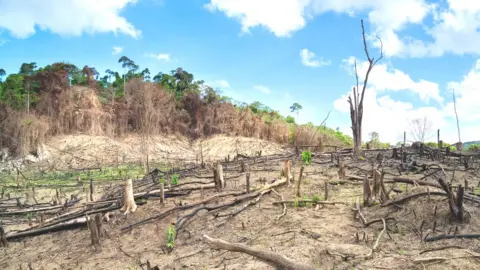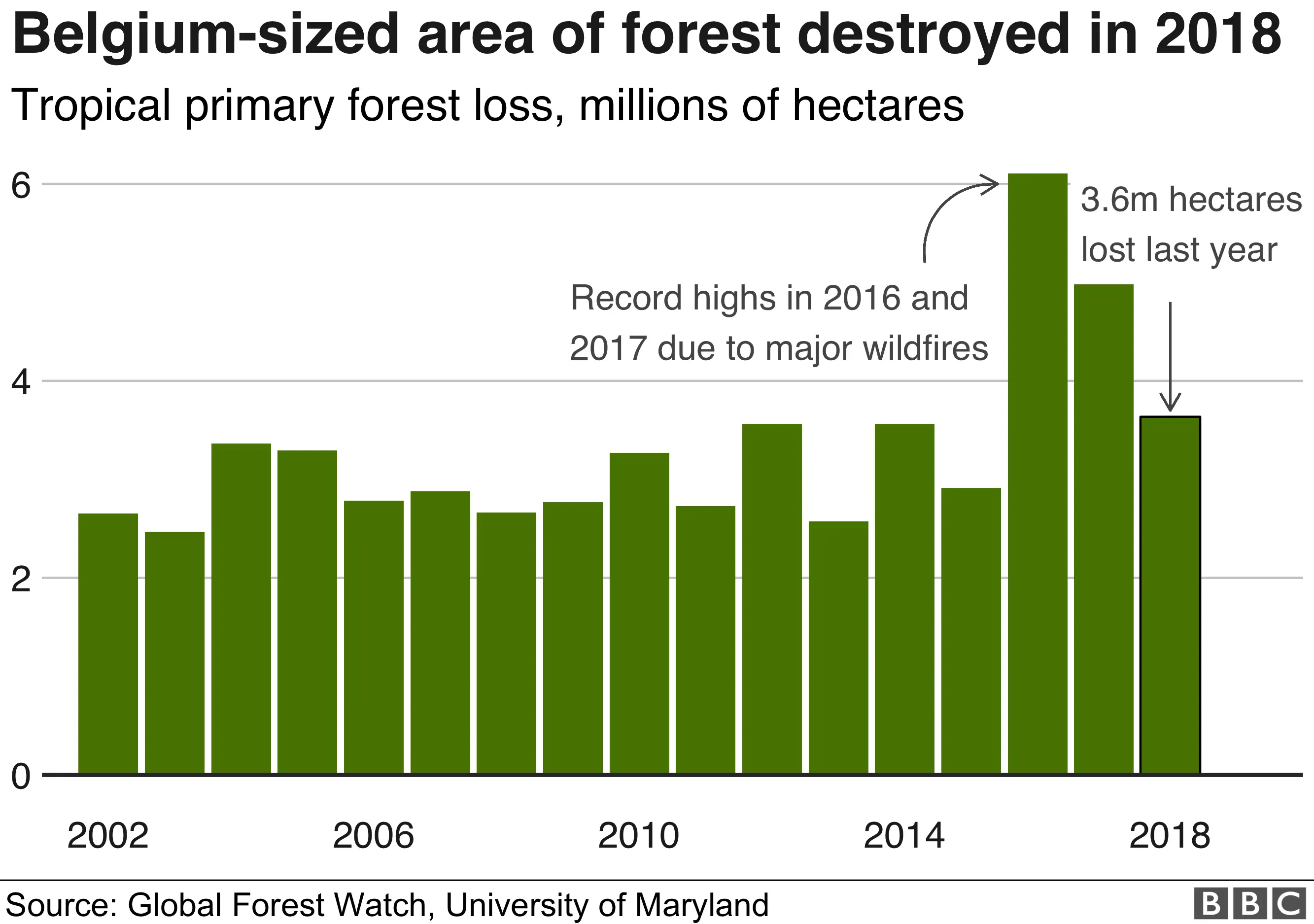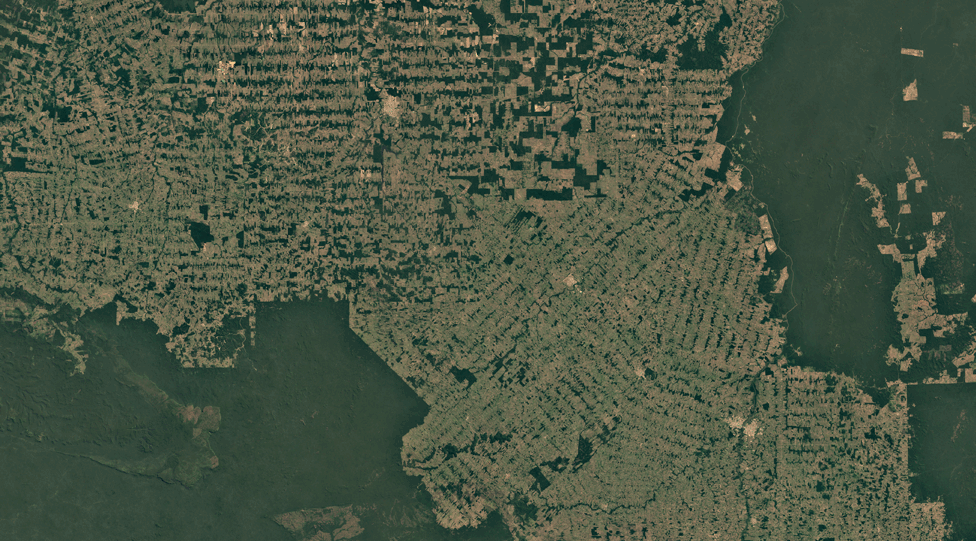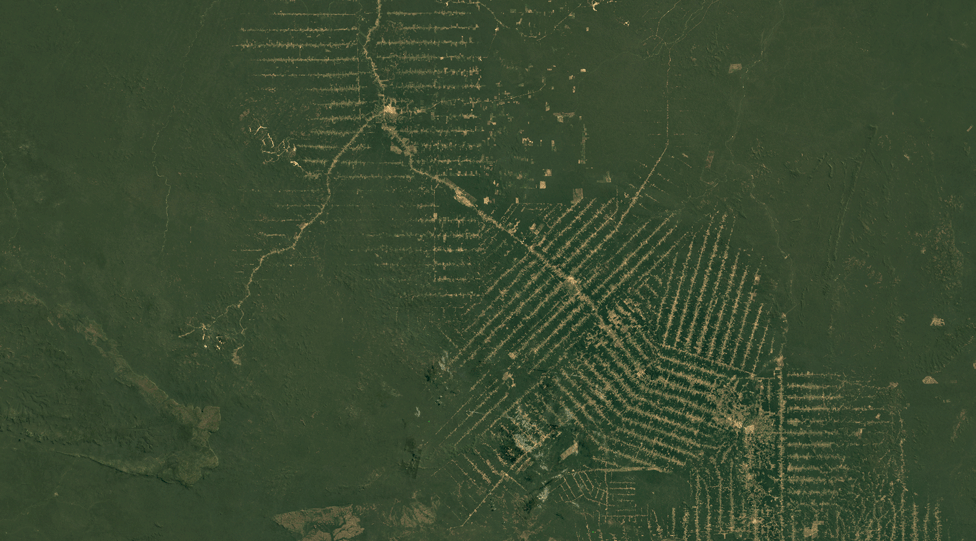Nature's emergency: Where we are in five graphics
 Getty Images
Getty ImagesThe felling of forests, the plundering of seas and soils, and the pollution of air and water are together pushing the natural world to the brink.
That's the warning more than 500 experts in 50 countries are expected to give in a major UN-backed report, due to be published on Monday.
The assessment will highlight the losses that have hit the natural world over the past 50 years and how the future is looking bleak for tens to hundreds of thousands of species.
The document, from the Intergovernmental Science-Policy Platform on Biodiversity and Ecosystem Services (IPBES), is also expected to set out an urgent rescue plan for nature.
So what do we know about the health of the planet in terms of biodiversity (the variety of living things on Earth and the ecosystems they belong to)?
1. The world's biodiversity is vanishing fast
The IUCN Red List of Threatened Species is a critical measure of our impact on nature.
Almost 100,000 species have been assessed so far for this inventory of endangered species. Of these, more than a quarter are threatened with extinction, ranging from Madagascar's lemurs to amphibians like frogs and salamanders, and plants such as conifers and orchids.


The assessments aren't yet complete, and we don't even know exactly how many animals, fungi and plants are on the planet. Estimates range from about two million species to approximately one trillion, but most experts go for around 11 million species or fewer.

You might also like:
Scientists believe the Earth is being driven towards a "mass extinction event" - only the sixth in the last half-billion years.
"There is now overwhelming evidence that we are losing the planet's species at an alarming speed," Prof Alexandre Antonelli, the director of science at the Royal Botanic Gardens, Kew, told BBC News.
The last time we had a similar situation was about 66 million years ago, which was caused by an asteroid hitting Earth, he said, though this time, "humans are the ones to blame".
Current extinction rates are about 1,000 times higher than before humans came along, and future rates are likely to about 10,000 times higher, according to estimates.
 Getty Images
Getty ImagesRegions with extraordinary richness of life are of particular concern, such as the African continent, which is the last place on Earth with a range of large mammals.
A study published last year by IPBES said that the actions of humanity could lead to the extinction of half of African birds and mammals by the end of 2100.
It also found 42% of land-based animal and plant species in Europe and Central Asia had declined in the last decade.
2. Among the biggest threats to wildlife are habitat loss, climate change and pollution
According to a recent study, while climate change is a growing threat, the main drivers of biodiversity decline continue to be the loss of natural habitat to farming for food, fuel and timber, and the overexploitation of plants and animals by humans through logging, hunting and fishing.


Mammals such as the pangolin are being pushed to extinction by illegal hunting for scales and meat. Unsustainable logging is contributing to the decline of the likes of the Myanmar snub-nosed monkey, while expanding agriculture is pushing out animals such as the cheetah.

More stories you might like:

"Governments have focused on climate change far more than they have focused on loss of biodiversity or land degradation," IPBES' chairman, Prof Sir Bob Watson, told the BBC.
"All three are equally important to human wellbeing."
3. Animals and plants are disappearing and so is the land they rely upon for natural habitat
Land degradation through human activities is negatively affecting the well-being of at least 3.2 billion people and pushing the planet towards a sixth mass extinction, according to IPBES.
The main drivers are unsustainable agriculture and forestry, climate change, and, in some areas, urban expansion, roads and mining.
Land degradation includes forest loss and, while globally this loss has slowed due to reforestation and plantations, it has accelerated in tropical forests that contain some of the highest levels of biodiversity on Earth.
Around 12 million hectares of forest in the world's tropical regions were lost in 2018, equivalent to 30 football fields per minute, according to a recent report.

4. Habitat conversion drives biodiversity loss
According to IPBES, only a quarter of land on Earth is substantively free of the impacts of human activities. This is projected to decline to just one-tenth by 2050.
"The issue of land use is central to the major environmental challenges we are experiencing," Prof Mercedes Bustamante of the University of Brasilia told BBC News.
Since 2001, Indonesia has lost millions of hectares of pristine rainforest. Losses in 2018 declined by around 40% thanks to stricter government legislation and a wet period that limited forest fires, but nonetheless palm oil plantations have gradually eroded the only remaining habitats of endangered orang-utan populations.


In the lowland forests of South East Asia, on islands like Borneo and Sumatra, IPBES predicts that one in three types of birds and nearly a quarter of all mammals will be lost if the rate of forest degradation continues.
5. Some of the last great rainforests are being wiped out
The Amazon region holds the largest tropical rainforest in the world, which is home to plant and animal species that are still being discovered.
Rondônia, in the western part of the Amazon, is one of the most deforested parts of the Amazon region. Trees are being lost as forests are cut down for growing crops or for pastures to graze cattle, as well as for logging and mining.
Over time, the landscape becomes a mixture of cleared fields, settlements and fragments of forest.
IPBES will formally release its first intergovernmental assessment on Monday 6 May, detailing the past losses and future prospects for nature and humans.


